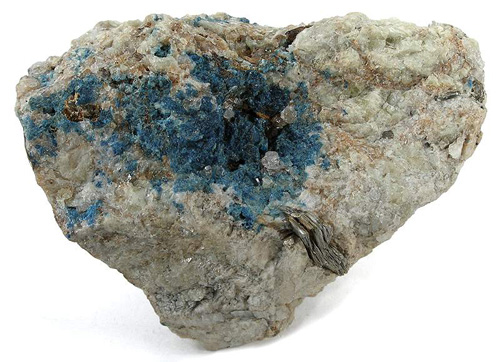The Mineral scorzalite

Scorzalite is an uncommon deep-blue mineral that forms a series with Lazulite. Lazulite is the magnesium-rich end member of the series, and Scorzalite is the iron-rich end-member. Scorzalite was first identified in 1947, and is named after the Brazilian mineralogist Evaristo Penna Scorza (1899-1969).
Chemical Formula
(Fe,Mg)Al2(PO4)2(OH)2
Crystal System
Monoclinic
Properties
Streak
White |
Hardness
5.5 - 6 |
Transparency
Transparent to opaque |
Specific Gravity
3.2 - 3.3 |
Luster
Vitreous |
Cleavage
3,1 |
Fracture
Uneven |
Tenacity
Brittle |
Uses
As a rare collectors mineral.
Noteworthy Localities
Good examples of this mineral that were originally thought to be Lazulite but recently analyzed as Scorzalite came from the Estaño Orcko mine, Potosí, Bolivia. Other worldwide occurrences include Horrsjöberg, Värmland, Sweden; and Torre de Moncorvo, Bragança District, Portugal.
In the U.S., the finest examples of Scorzalite are from the Palermo No. 1 Mine and the Charles Davis Mine, Groton, Grafton Co., New Hampshire. Other localities include the G. E. Smith Mine, Newport, Sullivan Co., New Hampshire; and the Champion Mine, Mono Co., California.
Common Mineral Associations
Quartz, Lazulite, Muscovite, Sillimanite, Kyanite, Rutile, Svanbergite
Distingushing Similar Minerals
Lazulite - Difficult to distinguish, though usually lighter in color and lower specific gravity.